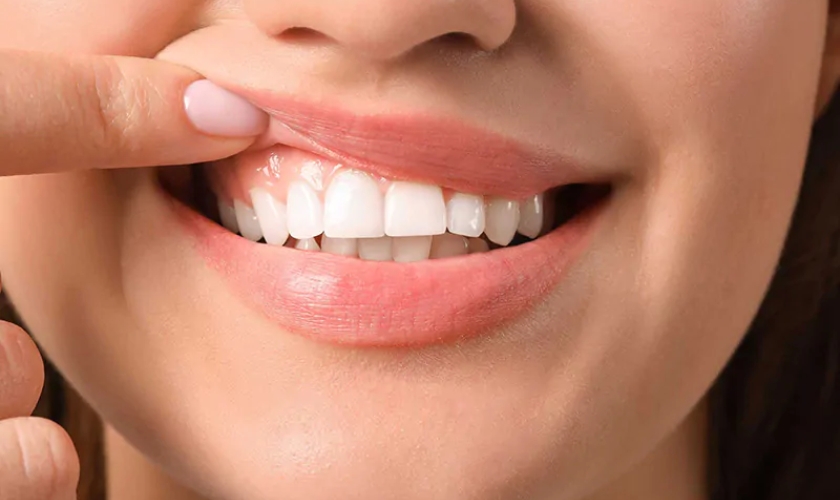
A healthy smile is a cornerstone of confidence and social connection. It allows us to express joy, radiate warmth, and forge connections with others. But if you’re battling receding gums, you might find yourself concealing your smile due to discomfort or aesthetic concerns. Gum graft surgery can be a transformative procedure, but a common question persists: how long do the results last?
Understanding Gum Grafts
Gum grafts are essentially patches of healthy gum tissue transplanted to an area of gum recession. The type of graft used depends on the severity of the recession and the dentist’s preference. Some common types include:
- Connective tissue grafts: This involves taking a small piece of tissue from the roof of your mouth (palate) and transplanting it to the receded area.
- Free gingival grafts: Similar to connective tissue grafts, but the tissue is harvested from another area of your gums.
- Pedicle grafts: A flap of gum tissue is lifted from adjacent healthy gum and repositioned to cover the exposed root surface.
Factors Affecting Gum Graft Longevity
- Type of graft: Connective tissue grafts, while providing structural support, may not completely cover the root surface. Free gingival grafts and pedicle grafts offer better root coverage and potentially longer lifespans.
- Surgical technique: A skilled and experienced periodontist can significantly impact the success and longevity of the graft.
- Oral hygiene: Maintaining excellent oral hygiene after surgery is crucial. Proper brushing and flossing prevent plaque buildup, which can contribute to graft failure.
- Smoking: Smoking is a major risk factor for gum disease and can negatively impact the healing process and graft survival. Quitting smoking or avoiding tobacco use altogether is highly recommended.
- Underlying medical conditions: Certain medical conditions, like diabetes, can affect wound healing and increase the risk of infection, potentially compromising the graft.
Maximizing the Lifespan of Your Gum Grafts
By following these tips, you can significantly improve the chances of your gum grafts lasting a lifetime:
- Meticulous oral hygiene: Brush twice daily with a soft-bristled toothbrush and floss once a day. Pay particular attention to the grafted area, but be gentle to avoid irritating the delicate tissues.
- Regular dental checkups: Schedule regular dental cleanings and checkups with your dentist. This allows for early detection and treatment of potential problems that could jeopardize the graft.
- Maintain a healthy diet: A balanced diet rich in fruits, vegetables, and whole grains gives your body the nutrients it needs for optimal healing and long-term gum health.
- Manage underlying conditions: If you have any underlying medical conditions, work with your doctor to ensure they are well-controlled.
- Quit smoking: If you smoke, quitting is one of the best things you can do for your overall health, including your gums.
Long-Term Care and Considerations
Remember, gum grafts are not a one-time fix. Just like your natural teeth, grafted tissues require ongoing care to maintain their health and longevity. Here are some additional points to consider:
- Follow post-operative instructions carefully: Your periodontist will provide specific instructions on caring for the grafted area after surgery. Following these instructions diligently is essential for optimal healing.
- Graft sensitivity: It’s normal for the grafted area to be sensitive for a while after surgery. However, if the sensitivity persists or worsens, consult your dentist.
- Potential for additional procedures: Depending on the severity of your gum recession and the type of graft used, you might require additional procedures in the future. Discuss this possibility with your periodontist during the consultation.
Beyond Aesthetics: The Broader Impact of Healthy Gums
Gum grafts offer more than just cosmetic benefits. Healthy gums play a vital role in oral health, acting as a barrier against infection and protecting the underlying bone structure that supports your teeth. By addressing gum recession through grafting, you’re not just improving the appearance of your smile; you’re investing in your long-term oral health and overall well-being.
If left untreated, gum disease can progress to more serious stages, leading to tooth loss and even impacting your general health. Studies have shown a link between gum disease and chronic health conditions like heart disease, diabetes, and even Alzheimer’s disease. Gum grafts can help prevent this by restoring healthy gum tissue and reducing the risk of further gum recession and bone loss.
Maintaining Healthy Smiles
While gum grafts offer a long-lasting solution for gum recession, proper aftercare is essential. By diligently following your dentist’s instructions, maintaining excellent oral hygiene habits, and attending regular dental appointments, you can significantly increase the chances of your gum grafts thriving for years to come. If you’re experiencing gum recession and considering gum graft surgery, consulting with a qualified dentist in Penn Township is the first step. They can assess your individual situation, discuss the different types of gum grafting procedures, and create a personalized treatment plan to restore your gum health and confident smile. General dentists in Penn Township can provide comprehensive oral care, including consultations for gum recession and gum grafting procedures.




